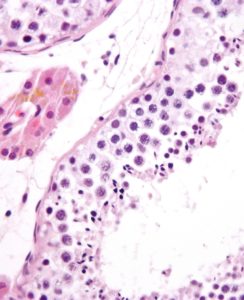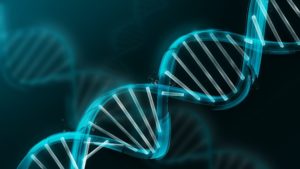
 The factors that can affect a man’s reproductive capacity are: sperm problems, hormonal , abnormalities, diseases and infections of the male reproductive system, external factors such as certain medications, such as smoking, stress, and alcohol consumption and other drugs.
The factors that can affect a man’s reproductive capacity are: sperm problems, hormonal , abnormalities, diseases and infections of the male reproductive system, external factors such as certain medications, such as smoking, stress, and alcohol consumption and other drugs.

Spermatogenesis is the mechanism responsible for the production, growth, maturation and release of DNA packaging from male germ cells from diploid spermatogonia to mature haploid sperm, this process is carried out in the seminiferous tubules located in the testicles. It begins at puberty and approximately 62 to 75 days in the human species. It consists of three phases or stages:
- the proliferative phase, where spermatogonia undergo a series of mitotic divisions and differentiate into primary spermatocytes
- the meiotic phase, in which meiosis and genetic recombination occur, producing the formation of haploid spermatids.
- spermiogenesis, involved in rearranging the structure of the cytoskeleton, ending with specialized germ cells called sperm.
Sperm DNA damage can occur at any stage of the spermatogenesis process, this is a multifactorial phenomenon and not fully elucidated that can affect both mitochondrial and nuclear DNA. Some factors are known that can cause irreversible damage to the DNA of the male gamete, these can occur during the production or transport of sperm cells and include: the generation of free oxygen radicals or oxidative stress (including hydroxyl radical and nitric oxide during sperm transport through the seminiferous tubules and the epididymis), abnormal chromatin packaging (errors in the replacement of histones by protamines in the spermiogenesis process), deficiencies in recombination, apoptosis in the spermatogenesis process after output of the sperm to the tubules and external causes that can cause or enhance the above effects within which certain environmental conditions such as contamination, smoking, elevated testicular temperature or pathological conditions such as cryptorchidism, varicocele, inflammatory processes or infection of the genital tract, cancer, feverish episodes and stress, among others.
 These alterations in the genetic material of the sperm can include anomalies in the chromatin condensation and in the integrity of the DNA molecule when it presents both double and single chain breaks and also chromosomal abnormalities, demonstrated by a correlation between the alterations in the organization of DNA genomic material and its potential for fertilization; emphasizing the fact that the stability of sperm DNA is a criterion to consider when considering whether a sperm could be fertile or not.
These alterations in the genetic material of the sperm can include anomalies in the chromatin condensation and in the integrity of the DNA molecule when it presents both double and single chain breaks and also chromosomal abnormalities, demonstrated by a correlation between the alterations in the organization of DNA genomic material and its potential for fertilization; emphasizing the fact that the stability of sperm DNA is a criterion to consider when considering whether a sperm could be fertile or not.
In recent years, damage to sperm DNA has been considered as a probable cause of infertility, and hence the interest in developing techniques to evaluate fragmentation has increased. There are different strategies to study the fragmentation of sperm DNA.
There are the methodologies aimed at detecting the breaks, both single chain and double chain that are naturally or fortuitously registered in the DNA molecule, such as the Tunnel or in situ test nick translation (NT) methodology. It incorporates molecules labeled with fluorochromos at the broken ends of DNA.
On the other hand, we have fragmentation study strategies that are based on measuring the ability of chromatin and, in particular, DNA to denature against certain treatments. In this group are: Sperm chromatin structure test (SCSA), sperm chromatin dispersion (SCD) and comet test.
TECHNIQUES USED TO EVALUATE SPERM DNA
- Tunnel Test
- In Situ Trial Nick Translation
- Comet test
- Sperm chromatic structure test (SCSA)
- Sperm chromatin dispersion (SCD)
A DNA Fragmentation test is recommended in the following cases:
. Idiopathic infertility (of unknown cause). After repeated failures in assisted reproduction techniques. Poor embryonic quality. Repeated abortions. Varicocele. Elderly males. Leukospermia. Genitourinary tract infections. Testicular cancer. Radio / chemotherapy.
In our centers we use the study of chromatin dispersion by means of kits that offer us faster, more effective and truthful results. Where the principle indicates that depending on the presence or absence and the size of the halo.
Bibliography
-
Alshahrani, et al.Infertile men older than 40 years are at higher risk of sperm DNA damage Reprod. Biol. Endocrinol., 12 (2014), p. 103
-
Rajender, K. Avery, A. AgarwalEpigenetics, spermatogenesis and male infertility Mutat. Res., 727 (2011), pp. 62-71
-
Wright, S. Milne, H. LeesonSperm DNA damage caused by oxidative stress: modifiable clinical, lifestyle and nutritional factors in male infertility Reprod. Biomed. Online, 28 (2014), pp. 684-703
-
I. Koskimies, M. Savander, N. Ann-Marie, H. KurunmakiSperm DNA damage and male infertility Duodecim., 126 (2011), pp. 2837-2842
-
Durmaz, A. et al. COMET, TUNEL, and TEM analysis of an infertile male with short
